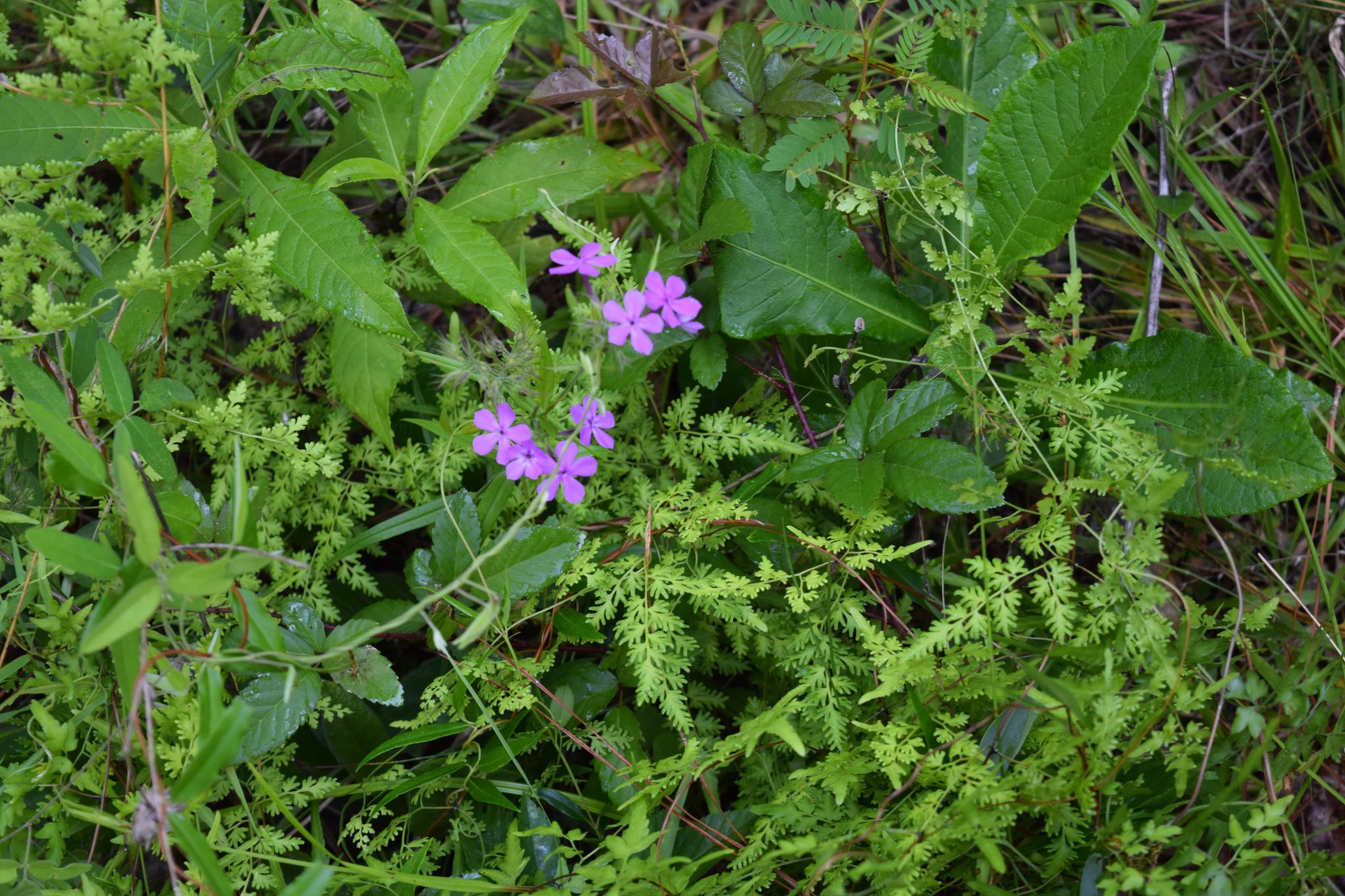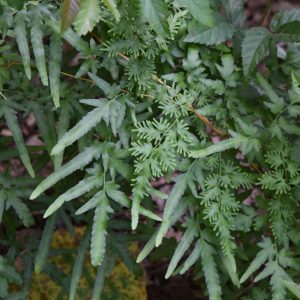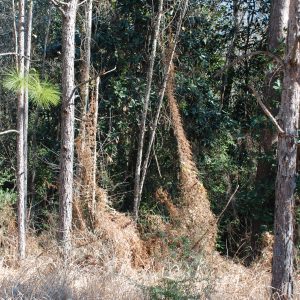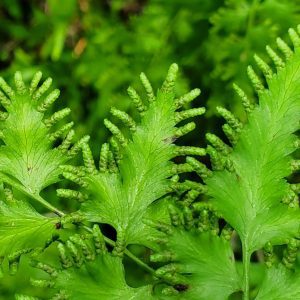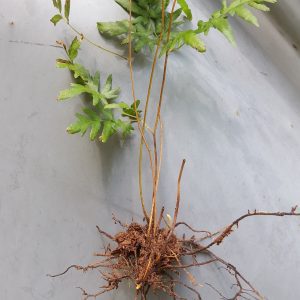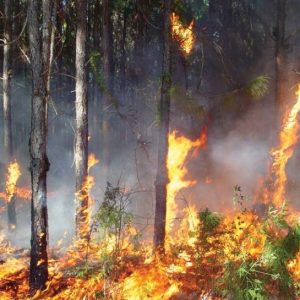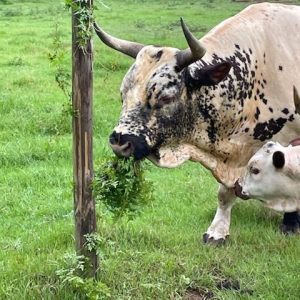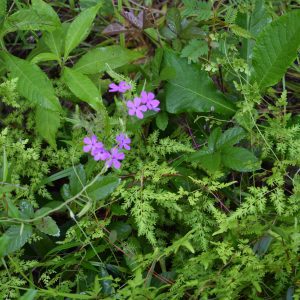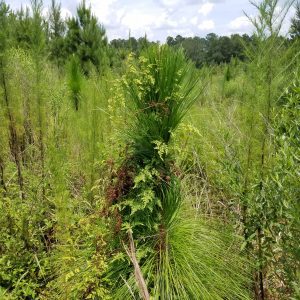Forestry & Wildlife

Japanese climbing fern is a noxious weed that can cause ecological and economic damage. Knowing its characteristics and effective removal methods can prevent the spread of this invasive species.
Introduced as an ornamental in the early 1900s, Japanese climbing fern (Lygodium japonicum) escaped cultivation and has become invasive in many habitats across the southern two-thirds of Alabama. The Alabama Department of Agriculture and Industries considers it a Class B noxious weed. As such, the introduction of Japanese climbing fern into or within Alabama is prohibited.
Identification
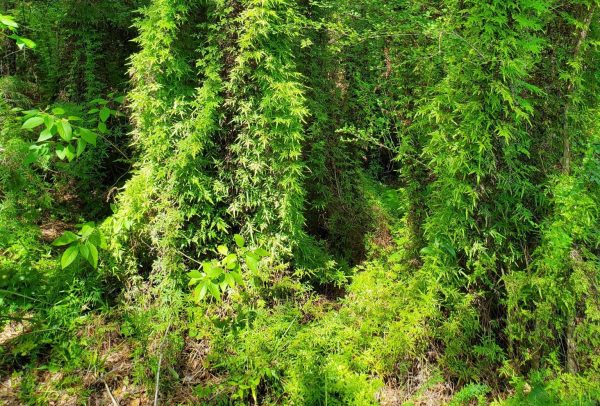
Figure 1. Japanese climbing fern infestation with vines trailing over the ground and climbing into trees and shrubs.
A perennial twining vine, Japanese climbing fern can grow to 90 feet, climbing into and over trees and shrubs or trailing along the ground, creating dense mats (figure 1). Stems (technically a rachis) are thin and wiry but difficult to break; they range from green to tan or reddish to almost black.
Leaves are positioned opposite each other along the stem. The shape is variable but generally triangular in outline and finely lobed. They run 3 to 6 inches long and 2 to 3 inches wide. Fertile fronds (bearing spores on the back) are more finely dissected than nonfertile fronds (figure 2). Typically light green, leaves turn tan to dark brown after exposure to freezing temperatures (figure 3). Dead vines often provide a trellis for regrowth the following spring. Plants may remain evergreen in protected areas or warmer climates.
Reproduction occurs via spores which are produced in sporangia, found in double rows along the underside of the leaf margin of fertile fronds (figure 4). Prolific numbers of spores (up to 38,000 per square inch) are produced in late summer through fall.
- Figure 2. Fertile fronds are frillier than nonfertile fronds.
- Figure 3. Fronds turn brown after a freeze. These dead vines can serve as a trellis for new growth in the spring.
- Figure 4. Spore-producing sporangia on the underside of fertile fronds.
Where It Grows
Japanese climbing fern invades many habitats, including roadsides, rights-of-way, forest edges, open forests, forest plantations, stream banks, riparian forests, and urban green spaces. It also is a significant weed in flower beds, especially where pine straw mulch has been used.
Japanese climbing fern is tolerant of sun or shade. Often found in areas with moist soil, it can tolerate drier sites as well. Although tolerant of disturbance, it also invades undisturbed sites.
How It Spreads
Spores are primarily wind-dispersed, with peak dispersal in the fall. They also can be transported in pine straw and on clothing, equipment, vehicles, and animals. Spores can persist in the environment for several years. Plants spread locally through shallow creeping rhizomes (figure 5).
- Figure 5. Rhizomes grow in the top 1 to 2 inches of soil. Note the wiry stems.
- Figure 6. Japanese climbing ferns can create a fuel ladder that carries fire into the crown of trees. (Photo credit: Chuck Bargeron, University of Georgia, Bugwood.org)
Ecological and Economic Threats
Japanese climbing fern vines, especially when growing in dense mats, shade the plants they are growing on, reducing plant vigor. Over time, this can lead to plant death and loss of native plant diversity. Dense mats also can reduce seedling recruitment in the understory. Loss of native plants also impacts insects, birds, and other animals that depend on the native species for food and shelter. Across the Southeast, several endangered plant species are threatened by Japanese climbing fern infestations.
Japanese climbing fern also poses a fire hazard. Vines climbing up tree trunks create fuel ladders, which can carry fire into the canopy of trees (figure 6). The resulting crown fires can be much more damaging than ground fires. Fuel ladders are especially problematic in forest plantations where prescribed fire is a common management tool. Another concern is that low-intensity fires may promote the growth and establishment of Japanese climbing fern.
Infestations in pine plantations managed for pine straw production are a concern because of the fern’s classification as a Class B noxious weed.
These threats continue to increase as Japanese climbing fern is spreading quickly, expanding its northward range, and becoming more common and widespread within its current range.
Control of Japanese Climbing Fern
Mechanical
With hand pulling, stems typically break off, leaving the rhizome in the ground; these will grow back. Since the entire rhizome must be removed, the physical removal of plants is practical only for small infestations.
Use a shovel or trowel to dig out as much of the rhizome as possible. Rhizomes typically grow within the top 1 to 2 inches of soil. Bag the plants and discard them in the trash. Do not place in compost or toss aside; rhizomes may resprout, and leaves can spread spores depending on the time of year.
Repeated cutting or mowing of small infestations may be successful over time, but rhizomes will continue to resprout until reserves are depleted. Care must be taken to avoid mowing when spores are present.
Some cattle producers report that range cattle, such as the Pineywoods breed, will eat Japanese climbing fern (figure 7). This can keep infestations knocked back but as with mowing, rhizomes will continue to resprout until reserves are depleted.
Prescribed Fire
Fire is not considered a control option. Fire will top- kill Japanese climbing fern, but rhizomes usually resprout quickly. Fire disturbance also can promote establishment. More research is needed to determine the impact of fire intensity and fire return intervals.
- Figure 7. Pineywoods cattle eating Japanese climbing fern.
- Figure 8. Japanese climbing ferns often grow over desirable plants, making control more challenging.
- Figure 9. Japanese climbing ferns growing over and through longleaf pine sapling.
Herbicides
Several herbicides provide effective control of Japanese climbing fern (table 1). Application can be a challenge, though, as vines often grow over and through desirable plants (figures 8 and 9).
While glyphosate, metsulfuron methyl, or a mix of glyphosate and metsulfuron methyl can be used, glyphosate alone shows the greatest control 2 years after treatment. Damage to desirable plants also is lower with glyphosate.
Individual plant treatment (IPT) with a foliar application of glyphosate is the only option for chemical control in residential landscapes. Since glyphosate kills or damages any plants it comes in contact with, vines must be carefully pulled away from desirable plants before spraying. Spray as much of the vine as possible. Follow- up treatment likely will be needed, but wait until vines are large enough (12 to 18 inches) to transport adequate amounts of herbicide to the rhizomes.
For broadcast foliar applications in nonresidential areas, apply the recommended amount of herbicide in 30 or more gallons of water per acre to increase herbicide coverage. Because Japanese climbing fern fronds are small, increasing the amount of water applied provides better coverage of herbicide solution. This allows more translocation to the roots and better control. Use a directed spray application to reduce collateral damage to desirable species. Continued monitoring and follow-up treatments will be needed.
The best time of year to treat Japanese climbing fern is July through September before spore dispersal. Still, it is better to treat at any time during the growing season (except for early spring) than not to treat at all. When using herbicides, always read and follow the label.
Table 1. Recommended Herbicide Rates for Japanese Climbing Fern Control
b Ready-to-use (RTU) products with ≥ 2% glyphosate can be used. Read label and do not use products advertised as quick or fast-acting; these will top-kill the plant but not the rhizomes.
c IPT (individual plant treatment) is the term used to distinguish herbicide rate recommendations on a percentage basis rather than a per-acre basis, which is used for broadcast treatments.
d Include a non-ionic surfactant at 0.25–0.50% v/v (volume/volume) if not already included in the product formulation.
| Herbicide Active Ingredient | Example Trade Name(s) | Application Method | Rate | Site | Notes |
|---|---|---|---|---|---|
| Glyphosate | Roundup or generics (41% active ingredient)b | Foliar IPTc | 2% v/vd | Residential, industrial, forestry, range, pasture, ROW | Avoid contact with desirable plants. Follow-up treatment is needed in most cases. |
| Glyphosate | Roundup or generics (41% active ingredient) | Broadcast foliar | 64 oz/Ad | Industrial, forestry, range, pasture, ROW | Avoid contact with desirable plants. Follow-up treatment is needed in most cases. |
| Metsulfuron methylaa | Escort, MSM 60 | Broadcast foliar | 2 oz/Ad | Industrial, forestry, range, pasture, ROW | Metsulfuron methyl is both soil and foliar active and can harm desirable trees. This herbicide cannot be used on or under longleaf pine trees. |
| Glyphosate + metsulfuron methyla | Roundup or generics (41% active ingredient) + Escort, MSM 60 | Broadcast foliar | 64 oz/A + 2 oz/Ad | Industrial, forestry, range, pasture, ROW | A mix of 64 oz. of glyphosate and 2 oz. of metsulfuron methyl can be applied for enhanced control on extreme infestations. Follow-up herbicide application is still needed. Do not use metsulfuron methyl around desirable trees. |
References
- Alabama Department of Agriculture and Industries. Administrative Code, Chapter 80-10-14 – Noxious Weed Rules. Statutory Authority: Code of Ala. 1975, h2-25-4. History: New Rule: Filed August 11, 2000; effective September 15, 2000.
- Bohn KK, Minogue PJ, and Pieterson EC. 2011. Control of Invasive Japanese Climbing Fern (Lygodium japonicum) and Response of Native Ground Cover During Restoration of a Disturbed Longleaf Pine Ecosystem. Ecological Restoration. 29: 346-356.
- Miller JH, Chambliss EB and Loewenstein NJ. 2010. A Field Guide for the identification of invasive plants in southern forests. Gen. Tech. Report SRS-119. Ashville, NC: US Department of Agriculture, Forest Service, Southern Research Station. 126 p.
- Minogue PJ, Bohn KM, Osiecka A and Lauer DK. 2010. Japanese Climbing Fern (Lygodium japonicum) Management in Florida’s Apalachicola Bottomland Hardwood Forests. Invasive Plant Science and Management 3(3): 246-252.
- Munger GT. 2005. Lygodium spp. In: Fire Effects Information System, [Online]. U.S. Department of Agriculture, Forest Service, Rocky Mountain Research Station, Fire Sciences Laboratory (Producer).
 Nancy Loewenstein, Extension Specialist, and J. Ryan Mitchell, Regional Extension Agent, both in Forestry, Wildlife, and Natural Resources, Auburn University
Nancy Loewenstein, Extension Specialist, and J. Ryan Mitchell, Regional Extension Agent, both in Forestry, Wildlife, and Natural Resources, Auburn University
New October 2022, Japanese Climbing Fern Identification & Control, FOR-2121

